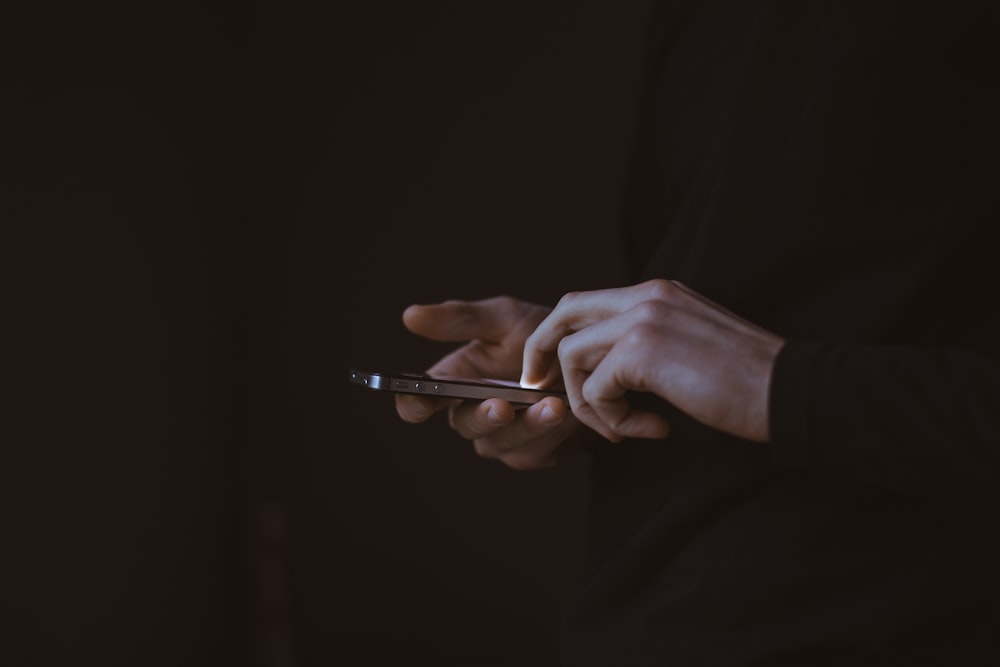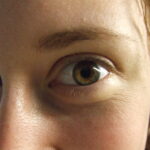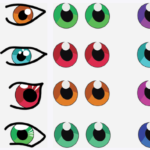Do Smartphones Harm Our Eyes

The short answer is yes. But in this modern day where everything has become digital, one cannot stay away from screen time.
Whether it is to wind back and watch a movie, to check an update on your latest class, or to finish up a work project, there’ll always be a reason to look at digital devices. So, what should you do?
Indeed, screens may affect or harm the eyes, but there are some things you can do to reduce the effect of the screen on your eyes. If you’re set to learn more about this, keep reading.
Can Screens Make Your Eyesight Worse?
Absolutely, prolonged exposure to screens can affect your eyesight. This phenomenon is commonly known as computer vision syndrome. It’s not just about staring at a computer screen, but also about the time spent on our phones.
Excessive phone use, especially over a long period of time, can lead to digital eye strain. Symptoms include dry eyes, sore eyes, and general discomfort. It’s not just the time spent that’s the issue, but also the type of light emitted by these devices.
Blue light, a high-energy visible light, is known for its potential to disrupt sleep patterns and contribute to eye strain. Interestingly, our habits play a role too.
Think about the hours spent scrolling through social media. This activity not only increases our screen time but also tends to be quite engaging, making us blink less often, which contributes to dry eyes.
It’s a cycle where social media only exacerbates the problem. To mitigate these effects, it’s essential to take regular breaks, adjust screen brightness, and perhaps use blue light filters.
Remember, our eyes aren’t designed for prolonged exposure to digital screens, so it’s crucial to balance tech use with eye health in mind.
Cell phones and vision problems
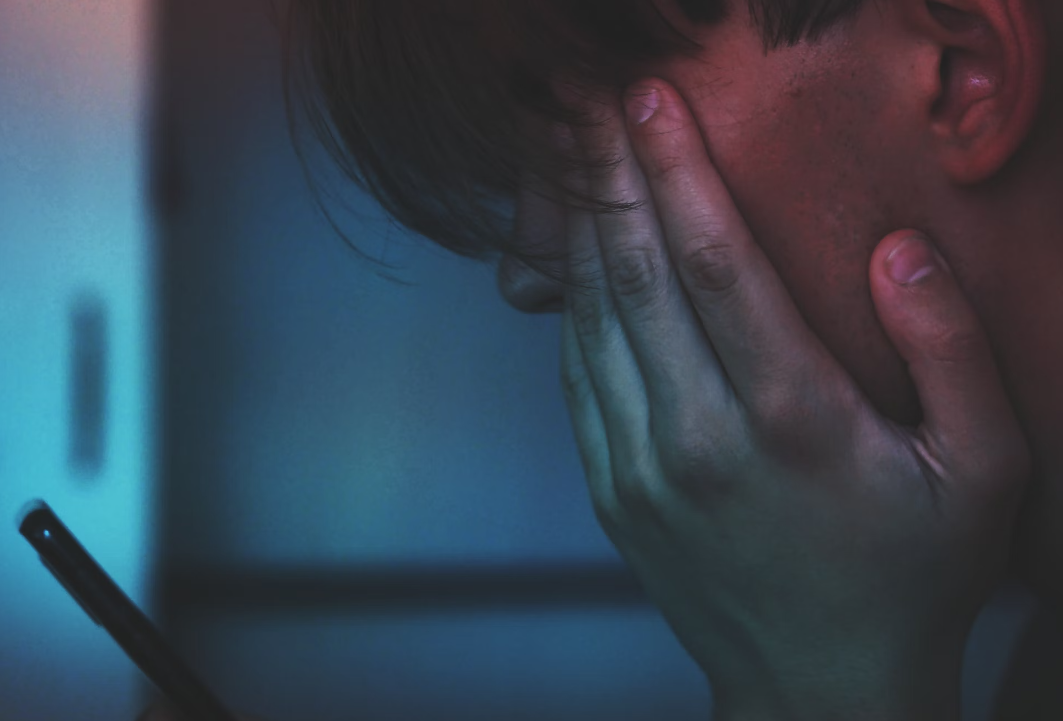
In this digital era, it’s no secret that cell phones and other mobile devices are a huge part of our daily lives. But as much as we rely on them, it’s important to consider how they might affect our eye health.
Staring at your phone screen can lead to eye strain, especially when reading smaller text for extended periods. This is because our eyes aren’t meant to focus on such tiny, bright details constantly. And that number goes down to the amount of time we should ideally spend on these devices to protect our eyes from potential harm.
The blue light emitted by digital devices is particularly concerning. This can be damaging to the retina over time, contributing to long-term vision problems. But your eyes sure don’t have to suffer.
Simple adjustments, like reducing screen time, increasing text size, and using blue light filters, can make a big difference.
Remember, phones damage more than just your attention span; they can also affect your eye health. So next time you’re scrolling or texting, think about the impact that phone screen can have and take steps to protect your eyes from unnecessary strain.
Your vision is irreplaceable, and a few mindful habits can keep it sharp and healthy.
How a Computer Screen Affects Your Eyes

Spending hours in front of digital devices, especially computers, has become a norm for many of us. But have you ever considered how this habit impacts your eye health?
Let’s look at how staring at a computer screen can lead to issues like digital eye strain, commonly known as computer vision syndrome.
Our eyes are not naturally designed for prolonged exposure to the blue light emitted from these screens.
In fact, a lot of people experience eye strain after extended computer use. This strain isn’t just discomfort; it’s a sign that our eyes are struggling to cope with the intense amount of blue light from the screen.
Blue light is known for its high energy, and it can penetrate all the way to the retina, the delicate part of the eye responsible for vision.
This exposure to blue light from our screens causes eye strain and also acts as a potential risk for eye damage over time.
Just like we take breaks from time to time to rest our bodies, our eyes need that too. Digital eye strain can manifest in symptoms like dry eyes, blurred vision, and headaches.
It’s crucial to take regular breaks, adjust screen brightness, and consider blue light filters to protect our eyes from the potential adverse effects of blue light.
What else causes eye damage from cell phone use? Blue light & macular degeneration

When it comes to our phones, we’re often glued to them for long periods of time, whether it’s for work, scrolling through social media, or catching up on the latest news.
But this constant phone use isn’t just a time sink—it can also have real implications for your eyes, particularly concerning blue light exposure and the risk of macular degeneration.
Firstly, let’s talk about what is actually happening to your eyes in front of those screens. Blue light, a high-energy visible light, is emitted by many digital devices, including your phone. It’s not all bad; during the day, blue light can be beneficial, boosting attention, reaction times, and mood.
However, prolonged exposure, especially in the evening, can disrupt your sleep cycle and contribute to eye strain. Your eyes work hard to focus on the small, bright screen, and over time, this can lead to discomfort and vision problems.
But the concern doesn’t stop there. Studies suggest that long-term exposure to blue light could contribute to age-related macular degeneration (AMD), a condition where the macula — the part of the retina responsible for clear central vision — deteriorates.
As the name suggests, the risk of macular degeneration increases with age, but long periods of phone use and exposure to blue light might speed up this process.
When the macula is damaged, it can lead to blurred or no vision in the center of the visual field, making daily tasks challenging.
While phone use is a part of modern life, understanding and mitigating the risks associated with blue light and potential macular degeneration is crucial for maintaining long-term eye health.
Remember, your eyes are invaluable, and taking steps to protect them from phone-related damage is well worth the effort.
How to Protect Your Eyes from Screens
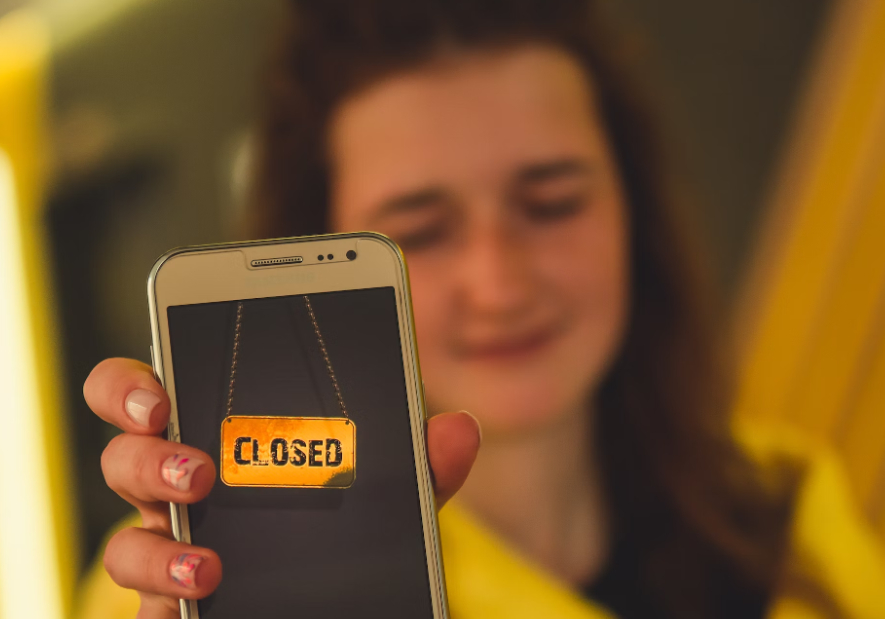
Although it is best to limit screen time, let’s be real, completely cutting out phone use isn’t practical for most people. So, what can you do to protect your eyes?
Reduce Blue Light
Ever wonder how to protect your eyes from the strain of looking at screens all day? One simple step is to maintain the distance between your eyes and the phone screen.
Holding your phone too close can increase the intensity of eyestrain and the amount of blue light exposure. You can also use settings available on many phones to reduce blue light emission, especially at night, or use blue light filters.
Use Anti-Reflective Screen Protectors

To combat eye strain from phone use, consider anti-reflective screen protectors. They’re a game-changer! These nifty little accessories reduce glare that bounces off your screen, making it easier for your eyes to focus without squinting or straining.
Plus, they’re a simple way to protect your eyes from the harsh light that can lead to eye damage. Just apply one to your phone, and notice how much more comfortable your eyes feel, especially when you’re scrolling for hours.
Remember, reducing glare is key, as well as maintaining proper distance and use adequate lighting when looking at an electronic device.
Use High-Resolution Screens

Another smart move is upgrading to high-resolution screens.
These screens offer sharper, clearer images, meaning your eyes don’t have to work as hard to interpret what they’re seeing. This reduces eye strain and makes everything from reading text to enjoying photos much easier on the eyes.
Think of it as giving your eyes a first-class experience – less pixilation, smoother edges, and overall less work for your peepers.
So, when you’re choosing your next phone or monitor, remember: higher resolution equals happier eyes. Plus, always keep in mind to look at an appropriate distance; it’s just as crucial for keeping your vision sharp and comfortable.
How to Protect Your Eyes from Digital Eye Strain
Similar to protecting your eyes from screens, these are the ways you can reduce the effect of digital eye strain despite use of digital devices:
Sleep and Eye Health

Good sleep is crucial in preventing eye damage from phone use. When you’re well-rested, your eyes are too. Lack of sleep can lead to dry, irritated eyes, making them more susceptible to strain.
The University of Toledo found that sufficient sleep helps the eyes recover from daily stress, including exposure to blue light from your phone. So, ensure you’re catching enough Z’s to give your eyes the rest they need.
Use the 20/20/20 Rule
To combat eye strain from your phone, adopt the 20/20/20 rule. Every 20 minutes, take a 20-second break to look at something 20 feet away.
This practice helps reset your focus and reduces strain on the eyes. Frequent breaks are essential, especially when you’re spending long hours in front of digital screens. It gives your eyes a chance to relax and can prevent symptoms like blurred vision.
Ensure Your Room Is Well Lit
Proper lighting in your room can significantly reduce eye strain from phone use. Ensure your environment is well-lit, but avoid harsh lighting that creates glare on your phone screen.
The right balance of light reduces the workload on your eyes and helps maintain focus. Also, adjusting your phone’s brightness to suit your surroundings can help. Remember to blink often, as staring at screens can lead to blinking less often, causing dry eyes.
Blink about 15 times a minute to keep your eyes moist and healthy. This simple act can prevent a lot of discomfort and strain on your eyes and shoulders.
Tips to Limit Your Computer and Cellphone Use

Sure, here’s some advice on how to limit your computer and cellphone use, keeping the tone casual yet professional:
1. Set Specific Goals: Start by setting clear, manageable limits for your screen time. Decide how many hours you want to spend on your devices each day and stick to it. Maybe it’s cutting down by an hour or setting certain times of the day as no-phone zones.
2. Use Built-In Features: Both computers and phones often have built-in tools to track and limit your usage. Features like Apple’s Screen Time or Android’s Digital Wellbeing can provide insights into how much time you’re spending on your devices and allow you to set limits for specific apps.
3. Create Tech-Free Zones: Establish certain areas in your home where phone and computer use is off-limits, like the dining room or bedroom. This not only helps reduce your screen time but also improves sleep and interpersonal communication.
4. Embrace Offline Hobbies: Reconnect with hobbies that don’t involve screens. Whether it’s reading, painting, cooking, or going for walks, engaging in non-digital activities can significantly reduce your reliance on devices.
5. Turn Off Notifications: Constant alerts pull you back into the digital world, making it hard to stay away. Try turning off non-essential notifications or use a “Do Not Disturb” feature during specific hours to minimize distractions.
6. Plan Your Day: Structure your day with specific times for checking emails, social media, or browsing. If you know you have a set time to look at your phone, you’ll be less tempted to pick it up every few minutes.
7. Physical Reminders: Sometimes having a physical note or object reminding you to put down your device can help. A sticky note on your computer screen or a small object in your pocket can serve as a reminder to limit your use.
8. Socialize Offline: Make more plans to meet friends and family in person. Engaging in face-to-face interactions can be a powerful motivator to put the phone away and can significantly enrich your social life.
9. Mindfulness and Self-Reflection: Practice mindfulness and reflect on how you feel physically and mentally after long periods of screen time. Recognizing negative effects can motivate you to reduce your usage.
10. Set an Example: If you have kids or spend time around them, remember that your behavior influences their screen habits. Reducing your own screen time can encourage others to do the same.
Check our contact lenses offer:

Clariti 1 Day contact lenses
Clariti 1 Day 30 contact lenses, made by Cooper Vision, a top-notch contact lens maker, ensures quality and reliability. Sha...
42,90 $

Biomedics 55 evolution
Biomedics 55 Evolution 6 contact lenses, born from extensive research, provide natural comfort with their ultra-thin design...
43,90 $

Biofinity Energys 6 Contact Lenses
Biofinity Energys lenses are monthly aspherical lenses created by CooperVision and recommended especially to people who spend...
52,79 $

ULTRA One day Contact Lenses
ULTRA One Day disposable contact lenses are the newest recommendation from Bausch & Lomb. They were produced to give the user...
49,90 $

